Instacart Retail
The Complete Guide to Driving Growth with Grocery E-Commerce
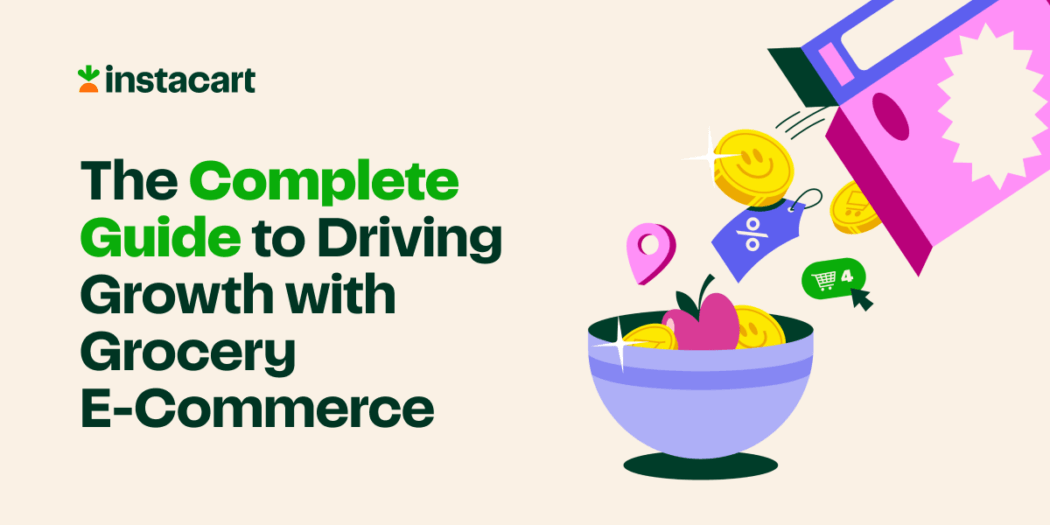
In the next five years, some grocery executives believe that e-commerce penetration will increase to as high as 35%. While grocery e-commerce and fulfillment leaders have spent years integrating technology to offer essentials to the public, COVID-19 accelerated this development as countless new customers adopted these services. That trial period is over, and the verdict is in: grocery e-commerce is here to stay. With it, grocery leaders are seeing shifts in consumer expectations, too. For instance, 80% of consumers expect their groceries in two hours or less.
As a retailer, you’ve worked hard to adapt to meet the increase in grocery e-commerce demands and build strong connections with your customers and your community. To keep the momentum, it’s worth reevaluating your omnichannel strategies to continue satisfying your customers while staying at the forefront of change.
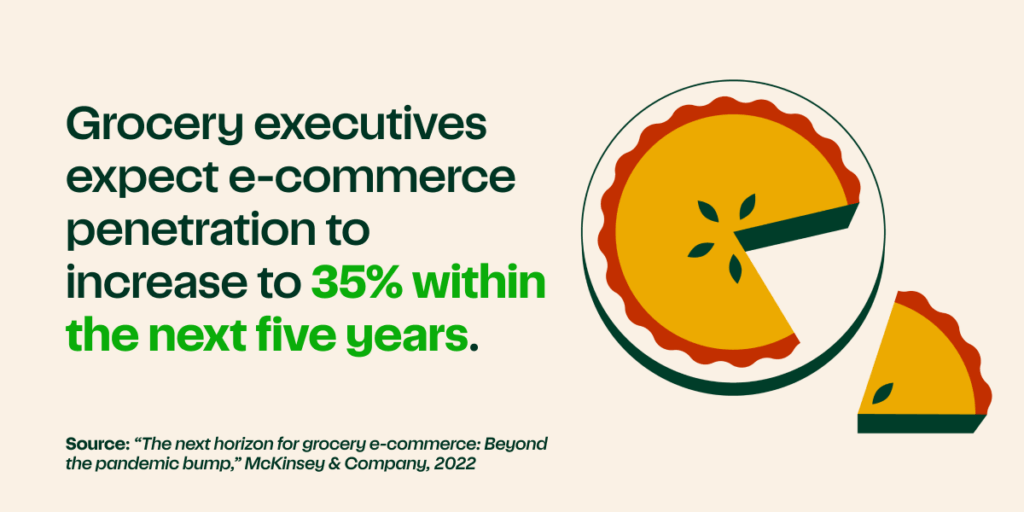
In this guide to navigating grocery e-commerce, you’ll find out how to future-proof your operations for continued growth in the grocery sector. Read on to learn:
- Questions that will help determine your current grocery operations and goals
- How a grocery e-commerce platform can help your business grow
- How to use online grocery technology to enhance in-store experiences
Evaluate the current state of your grocery e-commerce
Getting started with grocery e-commerce involves first evaluating both the current state of your digital transformation and your goals. Ask yourself these key questions:
- How are my customers currently purchasing from my store? Do they have to go to a brick-and-mortar location, or do I have flexible purchase options online or in-app?
- What assortment do I offer online and in-store? Can my customers order everything online that’s available in-store? Is my online catalog large enough that the software can suggest intuitive upsells and replacements for out-of-stock items?
- What are my current fulfillment options? Is it only in-store at the moment? How can I use flexible options like curbside, buy online, pick up in store, and delivery to provide convenient experiences?
- What technology do I currently have in place for ordering, advertising, and overall fulfillment?
- What data tools do I have in place for tracking ads, popularity of seasonal products, and my customer preferences?
- What payment methods does my banner currently accept?
- What does my technology infrastructure look like, and am I poised to scale using my current framework?
- What system do I have in place to handle merchandise inventory?
- How has the business grown over the past few years, and how have my competitors grown? What are they doing that I can replicate in my own grocery business?
- What are some things I do well? Is it customer service, a wide array of products for a variety of dietary needs, or do I excel at delivery options?
- What is my plan to continue growing in the next six months, year, and five years?
Once you’ve determined some of your strengths and areas for improvement, you can begin looking for a grocery e-commerce platform to meet your needs.
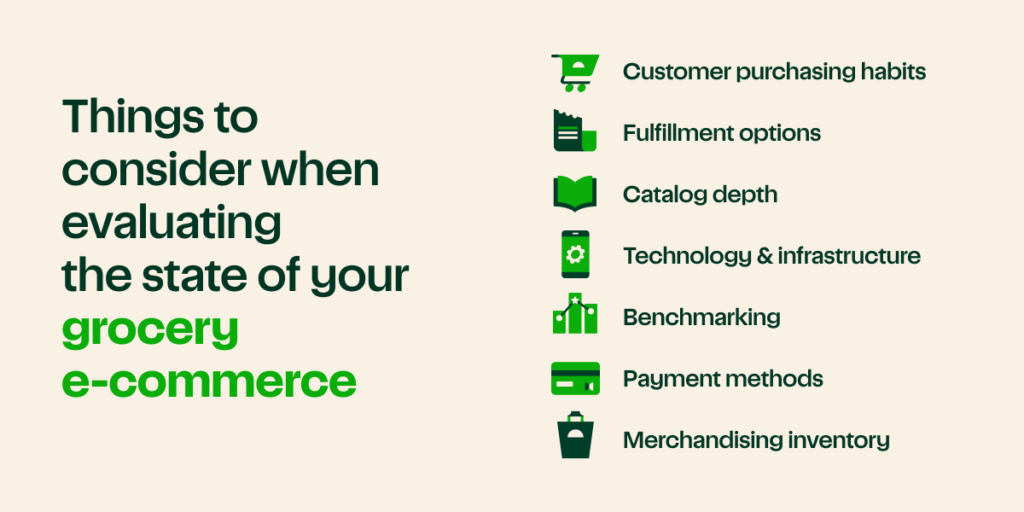
Drive future growth with a grocery e-commerce platform
A convenient, customer-facing digital experience can help position you to compete and easily adapt to changing factors in the grocery ecosphere. The right grocery e-commerce platform should not only connect customers’ online and offline shopping experiences, it should also streamline the entire process.
Recent research from Incisiv Inc. found that digital maturity and revenue growth go hand in hand. Leaders in the digital grocery space experienced 6% growth while those who have yet to adopt new practices grew only 1%.
Here are ways you can leverage a grocery e-commerce platform throughout the merchandising, purchasing, and shopping portions of the online customer journey:
Provide frictionless checkout
The checkout process should be as simple as filling a digital cart. The 2022 Incisiv data shows that 20% of customers will abandon their carts if the checkout process has cumbersome steps, like having to log in and re-enter a credit card. Features that save a customer’s addresses, payment methods, and other delivery details can offer them a faster and more seamless path to checkout.
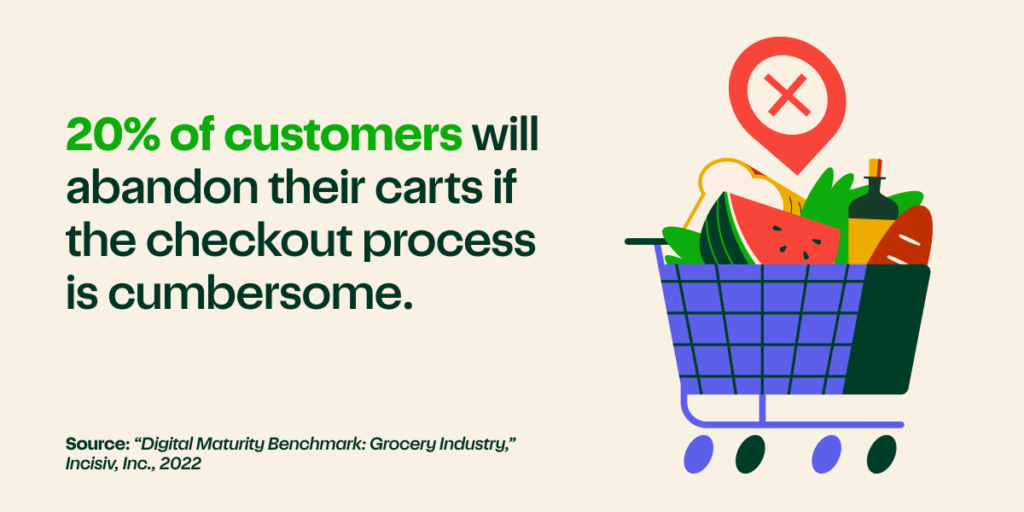
Provide a large catalog of products
Offer a robust assortment of products on your grocery e-commerce platform. This can help ensure that all items — particularly those that are high-margin and fast-moving — are available for consumers to purchase across all channels.
Offer multiple payment methods
A smooth checkout process won’t make much of a difference to your customers if they can’t use the payment method that’s most convenient to them. Make payments simple across all channels by giving users the ease of using their preferred payment, whether it’s a saved credit card, mobile payments, gift cards, EBT SNAP payment card, or a buy-now, pay-later method.
Enhance ad capabilities
Dynamic and sensible ad placement drives engagement and builds baskets. Reach customers during each stage of buying, from awareness to consideration to purchase. An in-platform advertising solution can tailor ads to specific customer demographics, shopping behaviors, preferences, and seasonal promotions.
Track conversions
To take advantage of running ads on your platform, you need to look into how the ads are performing and what they’re accomplishing. Once you’ve run ads or promoted items, you can track conversation rates, sorting by such metrics as item popularity, top substitutions, and the rate of velocity, to refine how you market and to whom.
Make scaling simple
A future-proof retailer shouldn’t be hesitant to grow. A modular platform can give you the tools to scale your customer experiences while avoiding costly new-store builds. Look for a grocery e-commerce site that offers a full suite of integrations so you can refine your operational processes over time and as you grow.
Transform your operations with grocery e-commerce capabilities that integrate across channels
Grocery e-commerce has seen rapid growth over the past four years. Instacart has enabled retailers of all sizes to tap into that growth, optimizing the e-commerce experience for themselves and their customers, while also improving the in-store experience.
To carry e-commerce innovation into every facet of the customer’s shopping journey, we help unify in-store and online shopping through Connected Stores. This initiative integrates technology with connected hardware to enhance the brick-and-mortar experience for consumers and shoppers in the following ways:
Find products easily: Carrot Tags are electronic shelf labels that make locating specific items easier for customers and Instacart shoppers. They can also include nutritional information and SNAP EBT eligibility.
Scan items and pay with mobile: The Scan & Pay feature gives customers the ability to scan items as they shop and pay via mobile phone, so they can skip checkout lines.
Shop with AI-powered carts: Caper Carts rely on artificial intelligence equipped with sensors, touchscreens, and scales so consumers and shoppers can check out right from the basket. Consumers also can build lists ahead of time that get automatically checked off as they add items to their cart. Grocers can easily charge batches of carts all at once.
Order prepared food ahead of time: Prepared food is more profitable than packaged grocery items. Instacart’s partnership with FoodStorm Department Orders takes the pain points out of order timing. Instacart’s integration ensures that prepared food, such as deli sandwiches or baked goods, is ready for the customer at their preferred time.
As these smart digital solutions become part of the in-store shopping experience, it becomes ever clearer that the grocery ecosystem has quickly evolved. Customers have come to expect the same level of convenience both in-store and at home. Above all, they’ve come to expect fast, reliable service.
Luckily, the tools that make this possible are now available to retailers of any size, allowing you to confidently equip yourself for growth in the ever-evolving marketplace. Let Instacart Platform help you create seamless grocery e-commerce experiences in-stores and online. Learn more about its enterprise-grade tools and integrations.
Most Recent in Carrot Tags
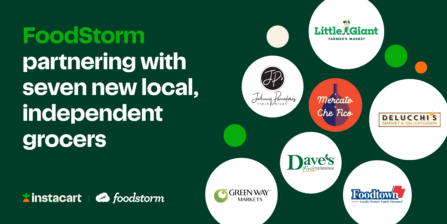
FoodStorm
Helping Local Independent Grocers Streamline Their Catering and Prepared Foods Businesses
Over the past few years, FoodStorm - our order management system (OMS) designed specifically to help grocers manage their deli, prepared foods and catering - has seen remarkable growth. And today, we’re excited to share…...
Apr 24, 2024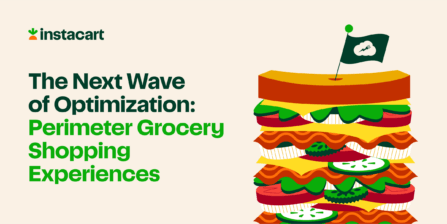
FoodStorm
The Next Wave of Optimization: Perimeter Grocery Shopping Experiences
Discover how you can optimize your perimeter grocery shopping experiences with software that connects your departments and delights your consumers. Simple, powerful, and digital: The future of perimeter grocery As the grocery landscape evolves, retailers…...
Apr 24, 2024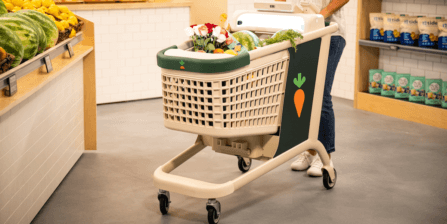
Caper
Why Smart Carts Are the Winning Technology Format for Grocers
One of the most common misconceptions about smart carts is that they only serve as an alternative to self-checkout. However, the real magic behind a Caper Cart, our AI-powered smart cart, is the digital screen.…...
Apr 9, 2024

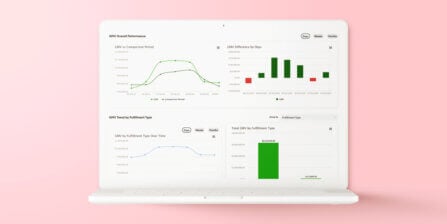 How to Use E-Commerce Insights to Properly Inform Your Business Decisions
How to Use E-Commerce Insights to Properly Inform Your Business Decisions 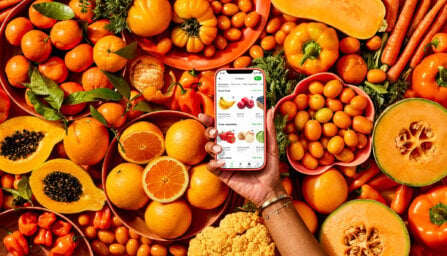 Five Strategies for Grocers to Enhance their E-commerce Experience this Holiday Season
Five Strategies for Grocers to Enhance their E-commerce Experience this Holiday Season  3 Ways to Use Retail Media Advertising to Boost Your Bottom Line
3 Ways to Use Retail Media Advertising to Boost Your Bottom Line 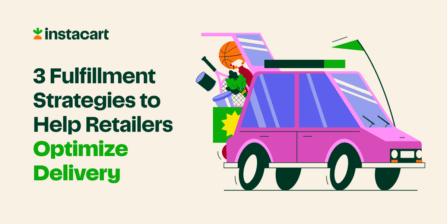 3 Fulfillment Strategies to Help Retailers Optimize Delivery
3 Fulfillment Strategies to Help Retailers Optimize Delivery 
